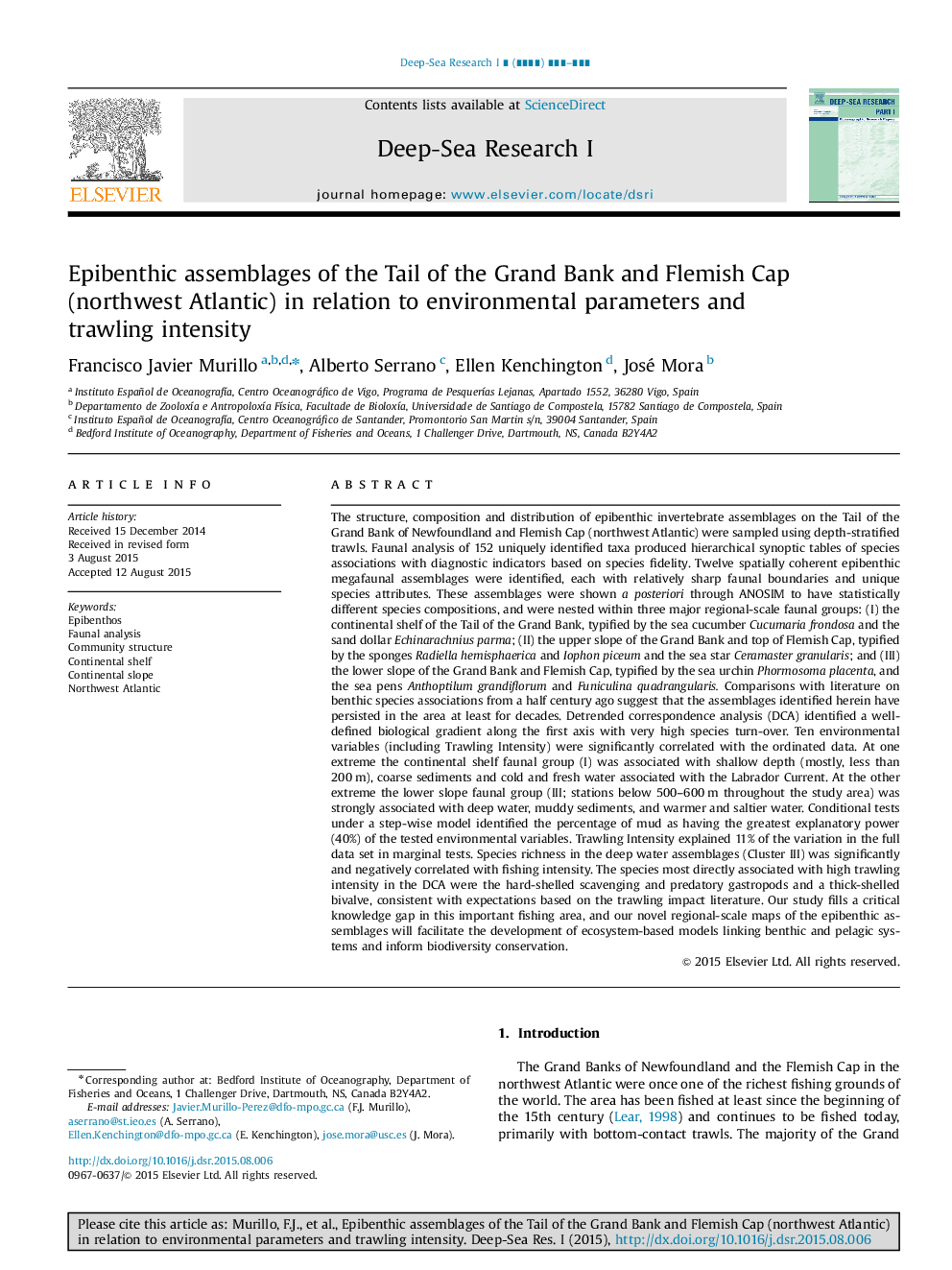| Article ID | Journal | Published Year | Pages | File Type |
|---|---|---|---|---|
| 6383431 | Deep Sea Research Part I: Oceanographic Research Papers | 2016 | 24 Pages |
Abstract
The structure, composition and distribution of epibenthic invertebrate assemblages on the Tail of the Grand Bank of Newfoundland and Flemish Cap (northwest Atlantic) were sampled using depth-stratified trawls. Faunal analysis of 152 uniquely identified taxa produced hierarchical synoptic tables of species associations with diagnostic indicators based on species fidelity. Twelve spatially coherent epibenthic megafaunal assemblages were identified, each with relatively sharp faunal boundaries and unique species attributes. These assemblages were shown a posteriori through ANOSIM to have statistically different species compositions, and were nested within three major regional-scale faunal groups: (I) the continental shelf of the Tail of the Grand Bank, typified by the sea cucumber Cucumaria frondosa and the sand dollar Echinarachnius parma; (II) the upper slope of the Grand Bank and top of Flemish Cap, typified by the sponges Radiella hemisphaerica and Iophon piceum and the sea star Ceramaster granularis; and (III) the lower slope of the Grand Bank and Flemish Cap, typified by the sea urchin Phormosoma placenta, and the sea pens Anthoptilum grandiflorum and Funiculina quadrangularis. Comparisons with literature on benthic species associations from a half century ago suggest that the assemblages identified herein have persisted in the area at least for decades. Detrended correspondence analysis (DCA) identified a well-defined biological gradient along the first axis with very high species turn-over. Ten environmental variables (including Trawling Intensity) were significantly correlated with the ordinated data. At one extreme the continental shelf faunal group (I) was associated with shallow depth (mostly, less than 200Â m), coarse sediments and cold and fresh water associated with the Labrador Current. At the other extreme the lower slope faunal group (III; stations below 500-600Â m throughout the study area) was strongly associated with deep water, muddy sediments, and warmer and saltier water. Conditional tests under a step-wise model identified the percentage of mud as having the greatest explanatory power (40%) of the tested environmental variables. Trawling Intensity explained 11% of the variation in the full data set in marginal tests. Species richness in the deep water assemblages (Cluster III) was significantly and negatively correlated with fishing intensity. The species most directly associated with high trawling intensity in the DCA were the hard-shelled scavenging and predatory gastropods and a thick-shelled bivalve, consistent with expectations based on the trawling impact literature. Our study fills a critical knowledge gap in this important fishing area, and our novel regional-scale maps of the epibenthic assemblages will facilitate the development of ecosystem-based models linking benthic and pelagic systems and inform biodiversity conservation.
Keywords
Related Topics
Physical Sciences and Engineering
Earth and Planetary Sciences
Geology
Authors
Francisco Javier Murillo, Alberto Serrano, Ellen Kenchington, José Mora,
